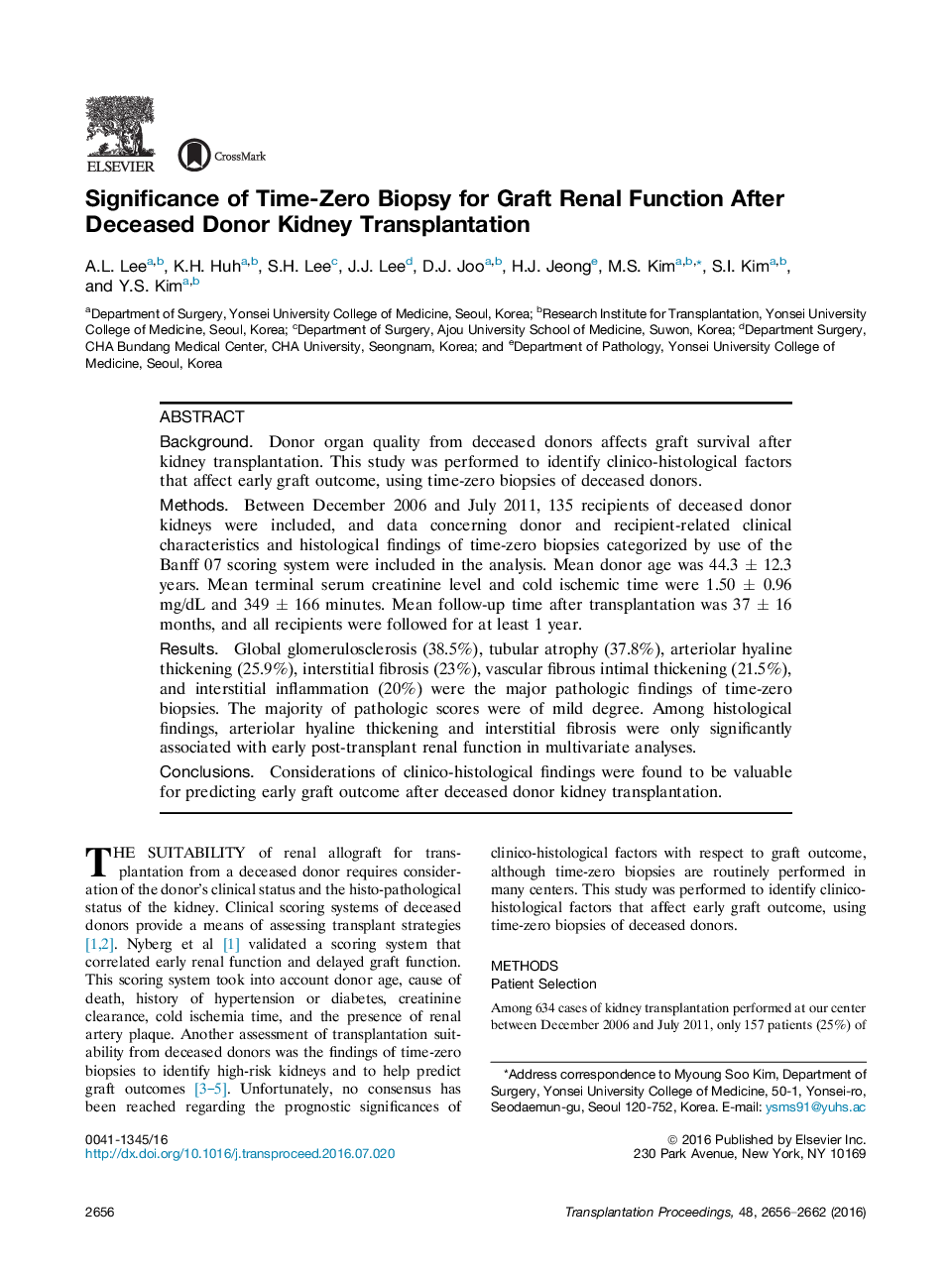| Article ID | Journal | Published Year | Pages | File Type |
|---|---|---|---|---|
| 5729202 | Transplantation Proceedings | 2016 | 7 Pages |
â¢The majority of histological findings were associated with donor age.â¢Early graft renal function was significantly associated with donor age.â¢Early graft renal function was significantly associated with AH and CI.â¢Clinico-histological findings of deceased donors could predict early graft outcomes.
BackgroundDonor organ quality from deceased donors affects graft survival after kidney transplantation. This study was performed to identify clinico-histological factors that affect early graft outcome, using time-zero biopsies of deceased donors.MethodsBetween December 2006 and July 2011, 135 recipients of deceased donor kidneys were included, and data concerning donor and recipient-related clinical characteristics and histological findings of time-zero biopsies categorized by use of the Banff 07 scoring system were included in the analysis. Mean donor age was 44.3 ± 12.3 years. Mean terminal serum creatinine level and cold ischemic time were 1.50 ± 0.96 mg/dL and 349 ± 166 minutes. Mean follow-up time after transplantation was 37 ± 16 months, and all recipients were followed for at least 1 year.ResultsGlobal glomerulosclerosis (38.5%), tubular atrophy (37.8%), arteriolar hyaline thickening (25.9%), interstitial fibrosis (23%), vascular fibrous intimal thickening (21.5%), and interstitial inflammation (20%) were the major pathologic findings of time-zero biopsies. The majority of pathologic scores were of mild degree. Among histological findings, arteriolar hyaline thickening and interstitial fibrosis were only significantly associated with early post-transplant renal function in multivariate analyses.ConclusionsConsiderations of clinico-histological findings were found to be valuable for predicting early graft outcome after deceased donor kidney transplantation.
